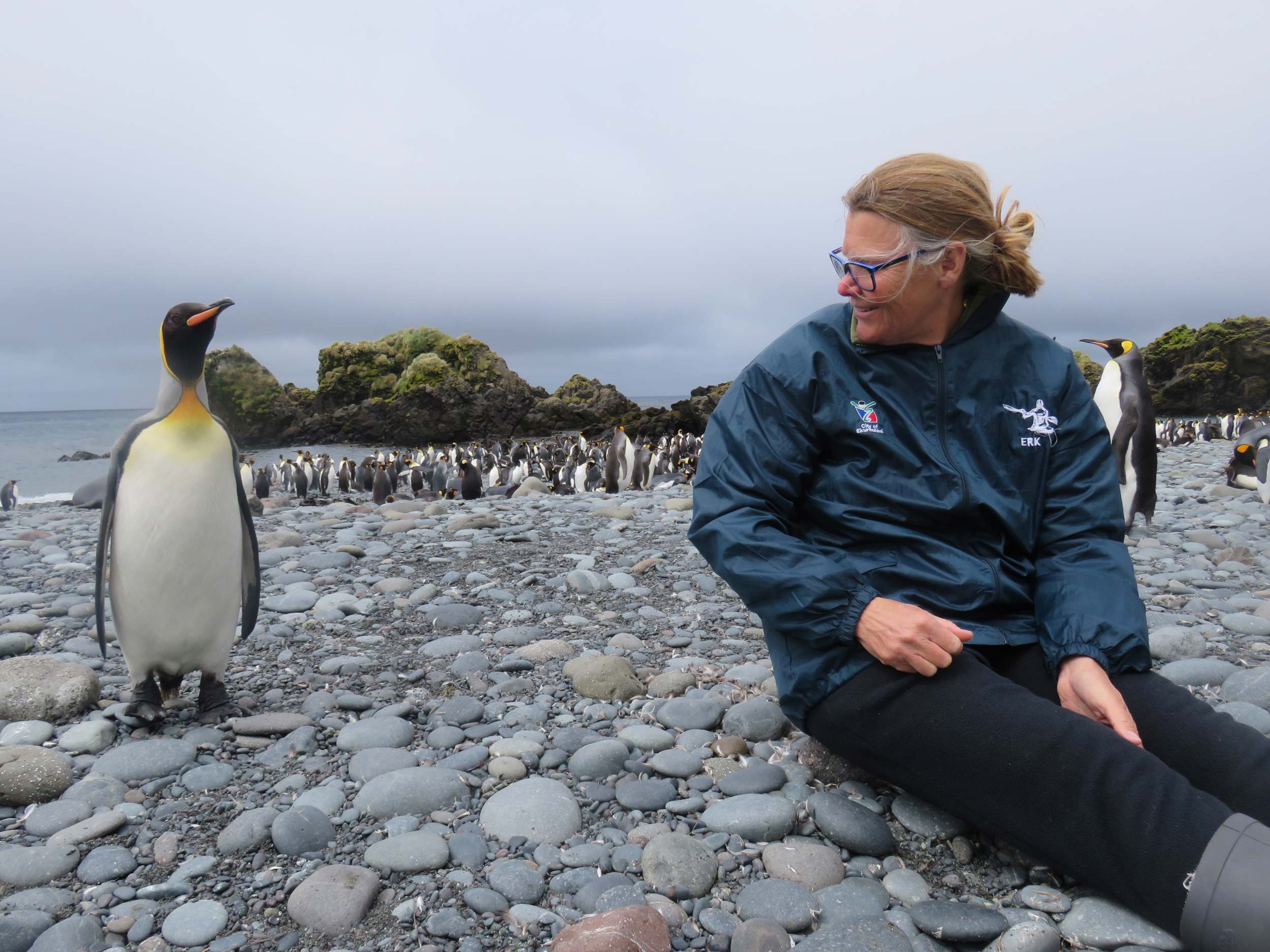Something in the air
What’s an atmospheric scientist you ask? What isn’t an atmospheric scientist is more like it. Meet Dr Margi Bohm. She describes herself as a jack-of-all-trades. That’s the understatement of the century.
When Dr Margi Bohm isn’t in a wind tunnel at the CSIRO testing models of the atmosphere, you will probably find her on Macquarie Island.
When she’s not on Macquarie Island setting up mini-weather stations, taking infrared images of penguins and trying to save endangered flora, she might be at an elephant park in South Africa.
When she’s not in Tembe Elephant Park investigating how elephants adapt to the warming climate (because they can’t sweat), you might find her back in her office at ANU.
You get the idea.
So what does she do for a living, you might ask? Is she a penguin spotter? Weather reporter? Elephant whisperer?
Atmospheric scientist would be the answer you’re looking for.
“Atmospheric science comes in many different flavours,” explains Dr Bohm, who is a Visiting Fellow at the ANU Research School of Biology.
“There’s the atmospheric physics, atmospheric chemistry, there’s mathematics. Some people study climate, other people study weather. I tend to be a bit of a jack-of-all-trades.”
Dr Bohm started off her academic career as a 17 year-old student in South Africa studying geography and mathematics, because her father told her to study the subjects that she loved.
On her journey from there to becoming an atmospheric scientist, Dr Bohm remarks:
“It certainly wasn’t planned! Nothing interesting is.”
So aside from the travelling, the penguins, and studying what she loves, what are the best things about being an atmospheric scientist?
“Even though my kind of science isn’t highly publicised, it’s critical to our understanding of what’s going to happen to our atmosphere and our interactions in the future. So I feel like I’m doing something useful.”
Dr Bohm recounts a story of one of her earliest research experiences, in what was then called a ‘black township’ during Apartheid South Africa.
“It was a place called Alexandria, and the people living there had severe lung diseases regardless of whether they smoked. We showed that it was because of the burning of coal to cook and heat that was causing this. Our findings resulted in Alexandria being electrified (i.e. electricity was introduced).
“I was less than 21 when I did this work, so to have started working with people who are actually changing the lives of hundreds of thousands of people was very special.”
Dr Bohm’s specific contributions aside, there is more to why the world needs atmospheric scientists, she says.
“In the news you might’ve read that CSIRO are cutting back on its climate staff because we no longer need them now that we have these models.
“Well, the model’s a model, it’s not a reality, and the hardest thing to model is the first few hundred metres between the surface of the Earth and the atmosphere. So understanding the nearby stuff, and that’s what I do.
“An example of this is here in Canberra. We atmospheric scientists know that when the Bureau of Meteorology says it’s going to rain in the morning, it will actually end up raining in the afternoon. We know that. Why? Because the models don’t capture the drag that the air mass bringing rain experiences en route from Adelaide to Canberra, so they’re always late.
“If we can’t get the weather right, how on earth are we going to get the global climate right?”
So as a scientist who’s just about done it all, seen it all and taken every opportunity that’s come her way, what advice does she have for young people?
Above all, study the things that you love.
“We need passionate people. We have serious problems, and we need serious people to solve them. And those people tend to be passionate.”

